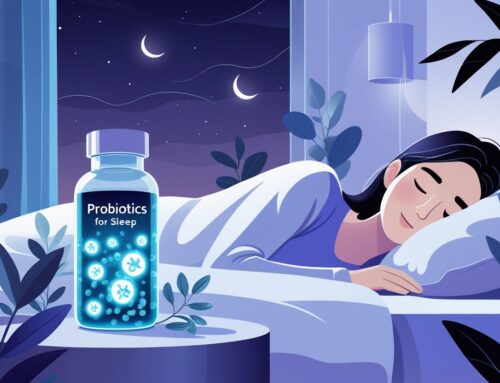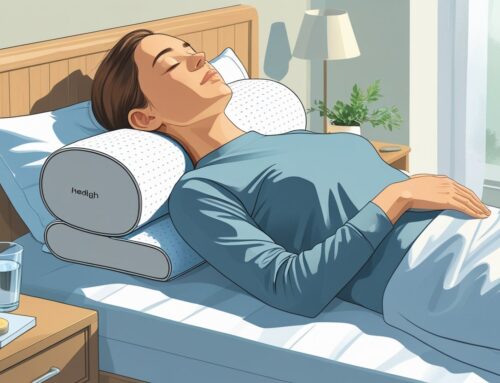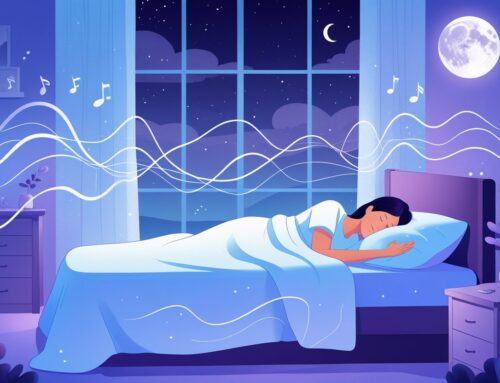Technology has revolutionized daily life, offering endless entertainment and opportunities for connection. Yet, it also brings challenges to restful sleep, especially when screens before bed become a habit. Understanding how technology affects sleep is crucial for maintaining healthy rest patterns.
Studies show that blue light from screens can suppress melatonin production, making it harder to fall asleep. Using electronics before bed, such as going to sleep on the phone, can disrupt the body’s circadian rhythm and delay sleep onset. Technology and sleep deprivation are closely connected, as excessive nighttime screen exposure can lead to poor rest quality.
Many people use phones, tablets, and computers before bedtime, which can negatively affect sleep cycles. Research suggests that reducing electronics in the bedroom and limiting technology use before bed can enhance sleep without requiring a complete digital detox.
However, maintaining healthy sleep patterns doesn’t mean cutting out technology entirely. Smart lighting, blue light filters, and sleep apps can aid in creating a peaceful sleep environment, proving that technology, when used mindfully, can support rest rather than disrupt it. Exploring these tech solutions can lead to better sleep hygiene and overall well-being.
Key Takeaways
- Blue light from screens affects melatonin and reduces sleep quality.
- Limiting electronics before bed can improve sleep patterns.
- Smart tech solutions, such as sleep apps and light filters, can help establish healthy sleep routines.
- No electronics before bed can support better rest and overall health.
- Smart mattresses improve sleep quality by offering features such as adjustable firmness, temperature control, and sleep tracking.
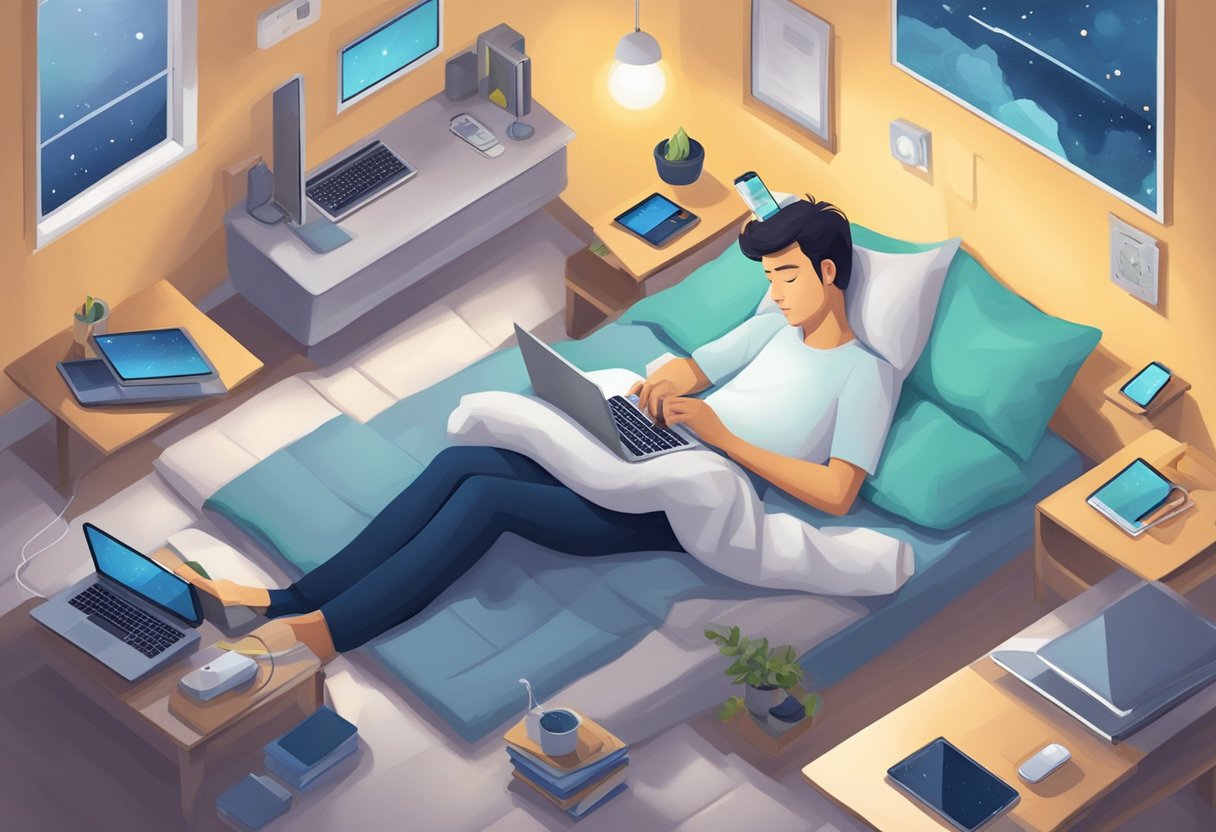
The Impact of Electronics on Sleep
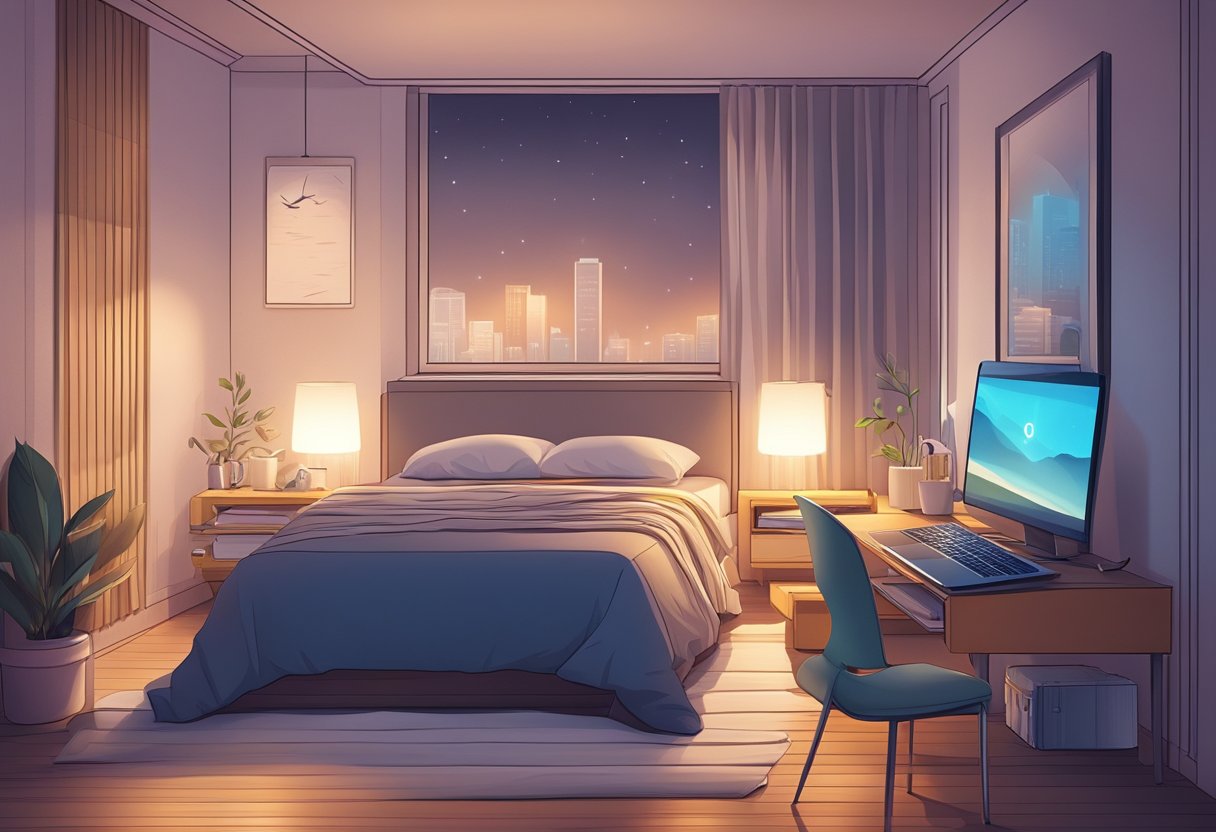
Sleep is crucial for health, but using electronics before bed can disrupt it. Exposure to screens affects sleep patterns and quality, leading to sleep deprivation.
Understanding Sleep Deprivation and Technology
Sleep deprivation can occur when people use electronic devices late at night. Blue light from screens tricks the brain into thinking it’s daytime, interfering with the production of sleep-inducing hormones like melatonin. This can delay the onset of sleep and reduce the time spent in restorative sleep phases.
Frequent late-night technology use may lead to tiredness and lack of concentration during the day. Studies show that many people experience excessive daytime sleepiness because their nighttime rest is disrupted by screens.
Electronics Before Bed and Sleep Quality
Using electronics before bed can affect sleep quality. Activities like checking emails or scrolling through social media can be engaging, making it harder to relax. This can result in difficulty falling asleep, staying asleep, and getting enough deep sleep.
Reducing screen time before bed can improve sleep. Experts suggest creating a tech-free bedtime routine, such as reading a book or practicing relaxation exercises. Dimming the lights and using blue light filters on devices can also help improve sleep quality.
Strategies for Healthy Sleep Hygiene

Maintaining healthy sleep hygiene is essential for a good night’s rest. Key strategies involve limiting electronics use before bed to create a restful environment free of distractions. Understanding the time pressure and electronic devices impact on sleep can help in developing effective strategies.
The Role of ‘No Electronics Before Bed’
Avoiding electronics before bedtime is crucial for sleep hygiene and can significantly reduce technology use impact on sleep quality.
The blue light from screens can interfere with the production of melatonin, the hormone responsible for sleep. This suppression may make it harder to fall asleep and can disrupt natural sleep-wake patterns. This is why it’s important to consider how do electronics affect sleep when establishing bedtime routines.
Using electronics in the evening can also increase brain activity, making it difficult to wind down. Establishing a routine that includes putting devices away at least an hour before bed can aid in relaxation and improve sleep latency. Encouraging activities like reading a book or taking a warm bath can help signal to the body it’s time to sleep. These practices contribute to a more relaxed state and improve sleep quality over time, countering the negative effects of technology affecting sleep.
Why Removing Electronics from the Bedroom Matters
Keeping electronic gadgets out of the bedroom is another effective strategy for improving sleep quality. The presence of a computer in the bedroom or other devices can be constant sources of distraction and disruption.
Notifications or vibrations from a phone might wake someone up, leading to fragmented sleep and reduced sleep efficiency. This is why many sleep experts advise against having electronics near you while sleeping. Having a device nearby can tempt people to check messages or watch videos, reducing sleep duration and overall sleep quality. Creating a technology-free bedroom helps associate the space with rest and relaxation rather than activity.
Using traditional alarm clocks and charging devices in another room can also support this effort. This simple change can contribute significantly to a sleep-friendly environment, helping ensure consistent and rejuvenating rest.
Exploring the Relationship Between Sleep Patterns and Electronic Devices
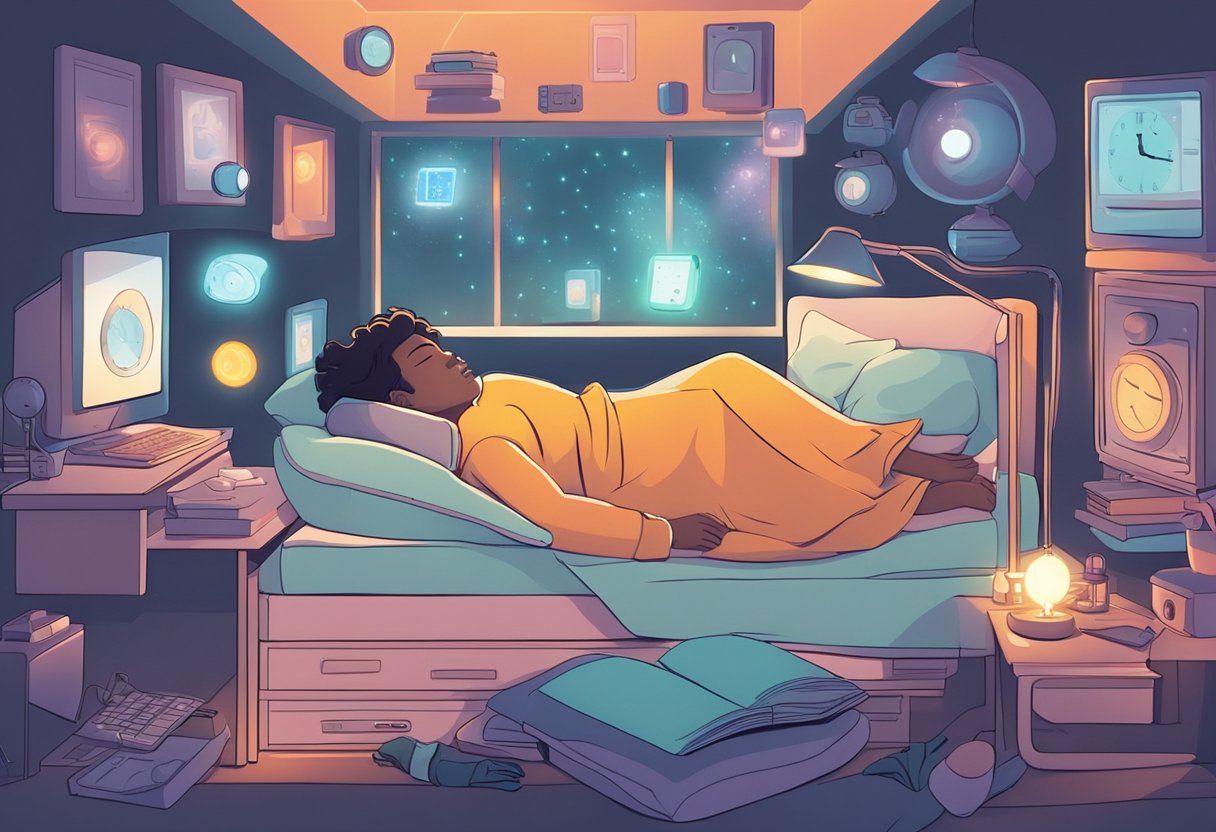
The presence and use of electronic devices can interfere with sleep quality and duration. Understanding how these devices impact sleep helps address potential disruptions and improve sleep habits.
Sleeping with Electronics Near the Head
Sleeping with electronics, like phones or tablets, close to the head can disrupt sleep patterns and overall sleep quality. Many people wonder, “Is it bad to sleep with electronics near you?” The answer is generally yes. These devices emit blue light, which can interfere with the body’s ability to produce melatonin, a hormone that promotes sleep. This interference can lead to various sleep disturbances and affect overall sleep efficiency. Additionally, notifications or sounds from devices may disturb a person throughout the night, leading to fragmented sleep and reduced sleep duration
.
Keeping electronic devices away from the head while sleeping can help improve sleep quality by reducing exposure to light and unexpected sounds. This practice is part of creating a technology-free bedroom environment. It is recommended to set devices to silent mode or switch them off entirely before going to bed to minimize their impact on sleep-wake patterns.
Do Electronics in the Bedroom Disturb Sleep?
The presence of electronics in the bedroom often leads to short or disrupted sleep, affecting overall sleep quality and duration. Televisions, computers, and gaming consoles can encourage activities that delay bedtime and disrupt natural circadian rhythms. Having a computer in the bedroom, for instance, can be particularly problematic.
Engaging with these devices keeps the brain active, making it harder to wind down and potentially increasing sleep latency. This engagement is one of the primary ways phones interfere with sleep and overall rest. Exposure to multimedia content or bright screens can extend wakefulness and reduce sleep time, contributing to various sleep disorders if done habitually.
Creating a bedroom environment free from electronics can help foster better sleep habits and improve overall sleep quality. This approach is part of developing sleep-friendly screen behavior. Establishing a nightly routine that minimizes screen time before bed can significantly improve sleep patterns and reduce the negative impact of technology use at night.
Scientific Insights into Screen Time and Sleep

Scientific studies have explored the connection between screen use, especially before bedtime, and sleep health. Understanding how technology affects sleep is crucial for people of all ages, including children, teenagers, and adults.
Can Screens Before Bed Improve Your Sleep?
Screens before bed are often linked to sleep problems, and research consistently shows a negative technology use impact on sleep quality. Blue light from devices can prevent the release of melatonin, a hormone that helps you sleep. This can make it harder to fall asleep, increase sleep latency, and reduce overall sleep quality. This is one of the primary side effects of using phone at night.
Some people claim that using screens for relaxing activities like reading or guided meditations can help them unwind. However, there’s limited scientific evidence to support this. The question of how long before bed should you turn off electronics remains relevant, with most experts recommending at least an hour of screen-free time. It seems more likely that screens disrupt sleep rather than improve it, affecting both sleep duration and sleep efficiency.
People looking to improve their sleep might be better off with activities that don’t involve screens, such as reading a paper book or practicing relaxation exercises. These alternatives can help maintain healthy sleep-wake patterns without the disruption caused by electronic devices.
Correlation Between Technology Use and Sleep Disturbances
Research consistently shows that increased screen time, particularly before sleeping, is linked to various sleep disturbances and can negatively affect overall sleep quality. Unspecified screen time, which combines all digital devices like smartphones, tablets, and computers, often correlates with poor sleep patterns and increased sleep latency. This correlation is a key aspect of how technology affects sleep statistics.
The presence of devices in the bedroom is common, with many people, especially among youth, having multiple gadgets nearby as they sleep. This prevalence can lead to shorter sleep duration, difficulty in falling asleep, and feeling tired during the day, contributing to excessive daytime sleepiness. These effects highlight the importance of understanding how do electronics affect sleep.
Sleep experts suggest reducing screen time about an hour before sleep to improve sleep quality and overall health. This recommendation is part of developing sleep-friendly screen behavior and creating a technology-free bedroom environment.
Addressing Misconceptions About Technology and Sleep
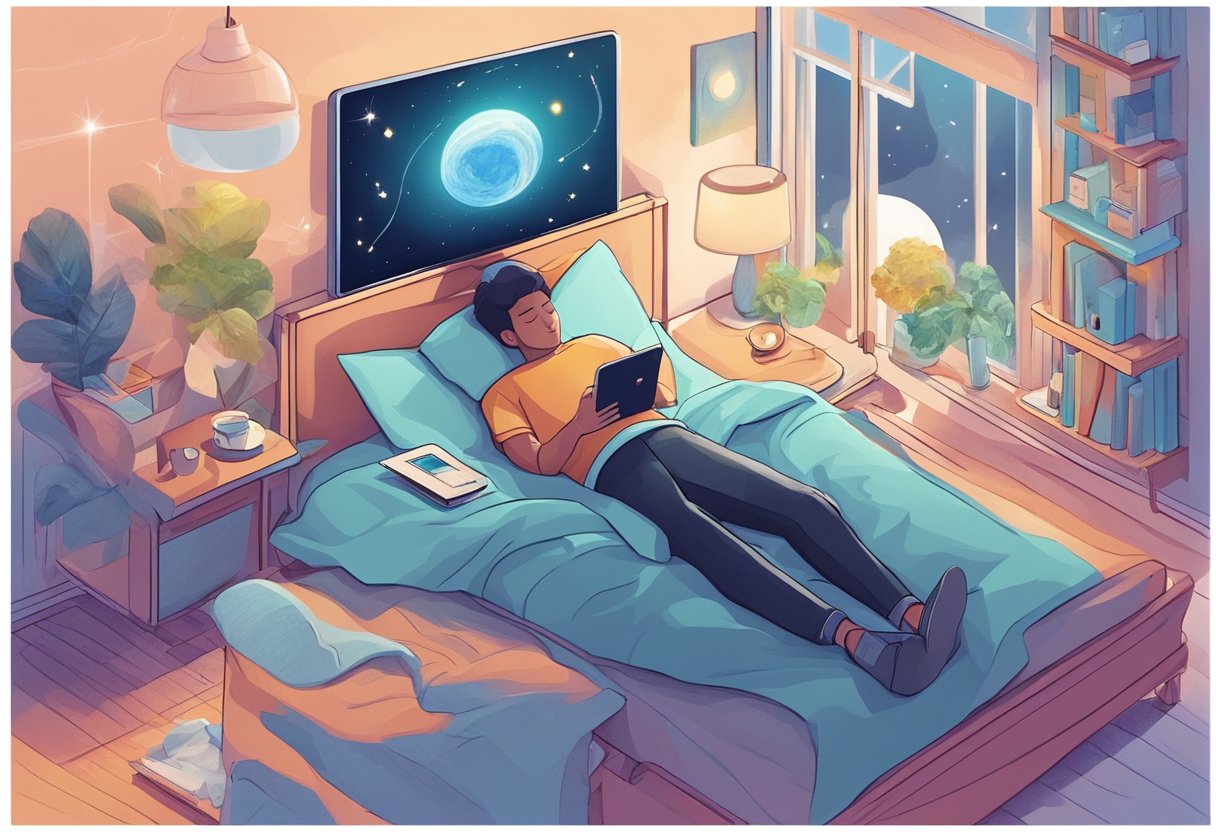
Many people worry that technology ruins their sleep, but not all gadgets are harmful. Some innovations in sleep technology aim to help people rest better. It’s important to separate fact from fiction when it comes to how electronics impact sleep and understand the nuanced relationship between sleep and technology.
Debunking Myths About Electronics and Rest
A common belief is that all electronics hamper sleep, but the reality of how technology affects sleep is more complex.
While screens can indeed disrupt sleep patterns, not all devices are harmful. For instance, many assume turning off devices two hours before bed solves all issues. Yet, it’s not just about timing; screen brightness and how stimulating the content is matter too when considering the impact of electronic devices before bedtime. Not everything on-screen is disruptive; reading calming text can help wind down. This nuance is important when considering how phones interfere with sleep.
Another misconception is that complete avoidance of technology ensures better sleep. In reality, moderation and mindful choices are key to managing the relationship between electronics and sleep. It’s about knowing when and how to use technology to minimize its impact on sleep quality and duration. Wearing blue-light-blocking glasses, adjusting screen settings, and setting boundaries can greatly alleviate sleep disruptions caused by technology use at night.
Innovations in Technology Designed to Promote Better Sleep
Technology isn’t just about screens and disruptions. Some advancements in sleep aid technology aim to improve sleep quality and overall sleep efficiency.
White noise machines or sleep apps can create environments conducive to relaxation. These tools help mask disturbances, allowing for deeper rest and potentially reducing sleep latency.
Wearable technology also plays a role, with devices tracking sleep patterns and offering insights for improvement. These gadgets don’t just monitor; they suggest changes and guide users toward better sleep practices, helping to optimize sleep duration and quality.
Sleep-inducing technologies, like smart mattresses and temperature-regulating bedding, also work to enhance comfort and facilitate restful sleep. These innovations demonstrate that when used correctly, technology can positively impact sleep-wake patterns and overall sleep health.
Best Practices for Incorporating Technology in the Bedroom

Balancing technology and sleep is crucial for maintaining good sleep health. By setting boundaries and establishing routines, individuals can harness technology without losing rest. Simple strategies can help mitigate the effects of blue light and promote relaxation, addressing concerns about how technology affects sleep.
Navigating the Digital World Without Sacrificing Sleep
Technology can interrupt sleep patterns through blue light exposure, which messes with the natural sleep-wake cycle and circadian rhythm.
Electronic devices like phones and tablets emit blue light, affecting melatonin production and making it harder to fall asleep. This is one of the primary ways how phones interfere with sleep. To navigate this, use apps or features that reduce blue light, such as Night Mode on smartphones. This can help minimize the side effects of using phone at night.
Limiting screen time before bed can also help improve sleep quality and duration. Set a time to switch off devices, ideally an hour before bedtime. This gives the mind a chance to unwind, signaling the body to relax and potentially reducing sleep latency. Additionally, place charging stations for devices outside the bedroom to create a more technology-free bedroom environment. This prevents late-night browsing and encourages a restful environment, potentially improving overall sleep efficiency.
Using technology mindfully at night ensures better sleep without cutting off the convenience it offers, striking a balance between sleep and technology use.
Tips for Using Technology Responsibly Before Bedtime
To integrate technology while maintaining healthy sleep habits, create a bedtime routine that promotes relaxation and addresses concerns about how technology affects sleep. Setting alarms to remind oneself to begin winding down can be effective in managing technology use impact on sleep quality. Use that time to engage in calming activities, like reading or meditation, rather than scrolling on devices. This practice can help reduce sleep disturbances and improve overall sleep quality.
Consider devices intended specifically for relaxation, such as white noise machines or meditation apps. These can guide users into a calm state without the disruptive effects of other electronics, potentially improving sleep duration and efficiency.
Choosing content carefully before bed is also important when considering electronic devices before bedtime. Engage with content that is soothing or neutral, avoiding thrilling shows or tense news updates that might increase mental alertness and disrupt sleep-wake patterns. Focusing on technology that supports relaxation can assist with a smooth transition into sleep, demonstrating that when used wisely, sleep aid technology can be beneficial.
How Mattresses Influence Technology and Sleep
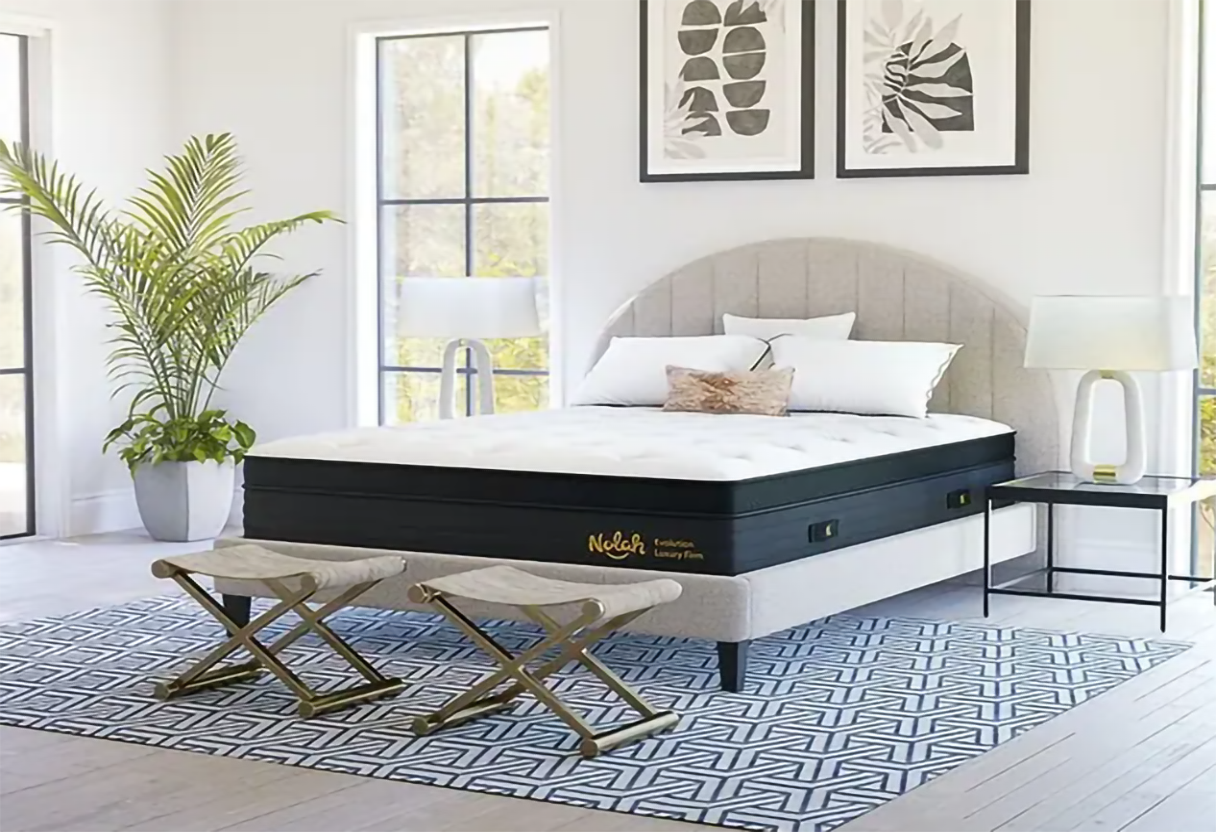
Smart mattresses are at the forefront of sleep technology, offering innovative solutions to enhance sleep quality. These mattresses integrate features like sleep tracking, temperature control, and adaptive support, providing a highly personalized sleep experience. By leveraging these advancements, sleepers can reduce disturbances, regulate sleep conditions, and improve overall rest quality.
Key Features of Smart Mattresses
- Adjustable Firmness: Users can customize the firmness level to match their comfort needs, which can help reduce sleep latency and improve pressure relief.
- Temperature Control: Advanced models regulate mattress temperature to create an optimal sleep environment, a key factor in improving deep sleep cycles.
- Sleep Tracking: Built-in sensors monitor sleep duration, efficiency, and quality, offering real-time insights to help users adjust habits for better rest.
For sleepers looking for a mattress that combines modern sleep technology with superior comfort, the Nolah Evolution 15” is an excellent choice. This hybrid mattress offers advanced temperature regulation, zoned support for optimal spinal alignment, and high-performance cooling materials—all designed to improve sleep efficiency and overall rest quality.
Additionally, if you’re considering a high-tech hybrid mattress that blends cutting-edge materials with exceptional support, explore our Best Hybrid Mattress: Comfort, Support, and More guide. It highlights top-rated hybrid mattresses that offer innovation, comfort, and durability to enhance your sleep experience.
By integrating technology-driven mattresses with an optimized sleep environment, sleepers can take full advantage of innovations designed to support deeper, more restorative rest.
Frequently Asked Questions
Technology impacts sleep through various factors such as screen brightness, electronic device proximity, and habitual use. While some sleep aid technology may actually aid sleep, excessive use of electronics and sleep issues often go hand in hand.

